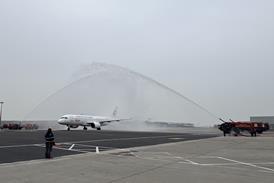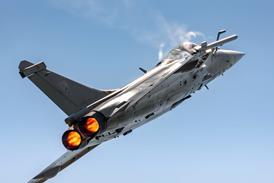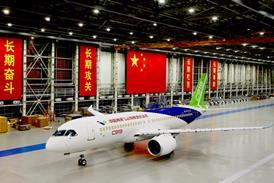Early feedback from pilots about a new offshore oil-rig helideck lighting system under test by the UK Civil Aviation Authority is proving favourable, according to a major North Sea oil-support operator. The International Civil Aviation Organisation is also watching the CAA test programme with interest, and may base new standards on the approved outcome.
ICAO has already incorporated one of the components of the new lighting format - the green helideck edge lights - into its standards for adoption from January 2009.
Early this year, CHC Scotia's chief pilot at its North Denes base, Capt Richard Blaney, said the first operational trials had provided only a few pilot reports, but all of them say the new lighting system provides "very good" visual cueing. But the CAA's research project manager, rotary wing, David Howson says the lighting system was unfortunately not ready for trials until winter was nearly over, which meant the end of intensive operational night flying until the winter of 2007/8, when the trials will be completed.
Then, says Howson, the agency will amend Civil Air Publication 437 to incorporate the new standards.
The CAA describes the lighting system as follows: "The landing circle is lit with yellow LED panels designed to provide sufficient light during the earlier stages of the approach when the helicopter is further away from the platform, without producing glare at close range. In addition, the standard 'H' marking on the deck is lit in outline form with green LED panels. The landing circle provides guidance throughout the approach and landing. The 'H' marking provides additional guidance at closer ranges."
The agency contrasts this with traditional lighting systems that are only good at short range and create a "black-hole approach" feeling. "Floodlights are currently used, but provide limited guidance and then only at close range where they can also be a source of glare to pilots."
Pre-operational trials of the lighting system took place at onshore sites, but the prototype deck lighting being used by the line pilots was fitted on a North Sea rig. In the brief period of darkness afforded on the night of 18 July this year the CAA, working with CHC Scotia, demonstrated the lighting system to visiting ICAO representatives who, Howson reports, "were suitably impressed".
The first prototype lighting system, produced by Aeronautical & General Instruments, was installed on Mobil's Thames Alpha platform in the southern North Sea. A second prototype system, manufactured by Techspan, is being installed on BP's Miller platform in the northern North Sea.
Howson says the new lighting should be able to be installed for "about the same cost as a set of floodlights", but when production systems are available, the agency anticipates recommending that the new lighting should be installed first on new-build decks or those which are already due for refurbishment. He emphasises that the system is particularly important for installation on the smaller "normally unattended installations" because the relative lack of superstructure provides particularly poor visual cues for the pilots.
Source: Flight International























